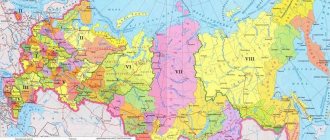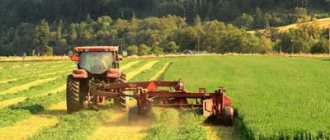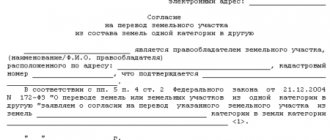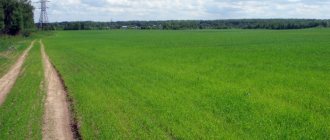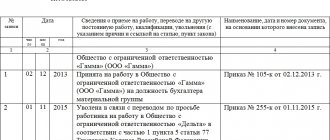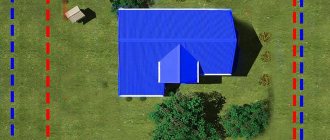The legislative framework
The transfer of land plots to the category of industrial land is carried out by a decision of local authorities , which is accompanied by changes in data on land plots, as well as the types of their permitted use within the cadastral database of the Unified State Register of Real Estate.
Changes in land categories are carried out on the basis of the following legal documents:
- Land Code.
- Regional legislation.
- Law number 172 “On the transfer of lands or land plots from one category to another”
Important! The list of categories to which certain lands may belong is given in Article 7 of the Land Code of the Russian Federation. Article 8 of the same Code indicates that the change of categories of agricultural land is carried out by the land departments of regional administrations.
As for filing petitions with authorities, the nuances of preparing the required documentation and considering appeals, these are regulated by Law No. 172. Local laws also determine the form, as well as the regulations for the application of persons who are interested in changing the category of a separate land plot (clause 2 of Article 2 of Law No. 172).
Rules of procedure
After receiving the request, the responsible official of the government agency responsible for receiving the documents registers them by assigning the specified documents an incoming number indicating the date of receipt and issues a receipt for the specified papers in two copies. One copy of the receipt is issued to the applicant on the day the documents are received upon direct application by the applicant.
Next, opinions on the possibility of changing the category of a land property are collected from the involved authorities and organizations, such as departments of urban development, the Ministry of Agriculture, the Federal Real Estate Cadastre Agency, the Rospotrebnadzor department, as well as the opinion of local governments. If necessary, an environmental assessment can be carried out .
Is it possible and how to translate?
The particular fertility of agricultural land is the basis for strict control over their turnover by the state authorities.
For example, the construction of any buildings on such plots of land is prohibited at the legislative level .
However, if, due to a certain number of circumstances, the construction of buildings on such sites is still necessary, then the norms of the current legislation provide for the possibility of transferring agricultural land to the industrial category.
The condition for the transfer is the following circumstances:
- The cadastral assessment of the site recognized its value as the statistical average for a certain area.
- The construction of industrial facilities on the territory of a certain agricultural area is a proven necessity, dictated by production goals.
The conditions from the second paragraph may include, for example, the need for strategic development of the region, which includes agricultural land subject to transfer to the category of industry, increasing production capacity, etc. In addition, the reason for changing the corresponding category of land plots may be the need construction of communication stations or irrigation systems.
Attention! The transfer of land to the category of industry is unlikely or even impossible when these lands are of particular value to the state due to their increased fertility, the location of nature reserves or nature reserves on their territory, etc.
The appeal process using an example from judicial practice
The owner of a dacha plot, citizen P., filed a statement of claim in court with a request to declare illegal the act of refusal to transfer the plot from agricultural land to the ZNM category. Citizen P. justified his claim by the fact that in connection with the expansion of the residential microdistrict planned for 2021 - 2019, the decision of the meeting of the district Duma of the Starodvorsky municipal district No. 321-r approved the master plan for the urban settlement of Veseloe, Starodvorsky district, according to which his dacha was included within the city limits n. Merry.
On July 1, 2021, citizen P. sent a petition to the administration of the Starodvorsky district to include his plot in the territory of the Veseloye settlement and transfer the dacha land from the ZSHN category to ZNP for individual housing construction (IZHS).
The administration of the Starodvorsky district made a decision to refuse to include the site within the boundaries of the Veseloye settlement due to the fact that construction of a residential complex has not yet begun, due to which the boundaries of the village are expanding.
Having considered the presented materials, the court came to the conclusion that the act of refusal issued in response to the petition of citizen P. was unfounded. In accordance with paragraph 1 of Article 7 of Federal Law 172, the expansion of the territory of an urban settlement, fixed by urban planning, is a legitimate reason for the transfer of dacha ZSHN to the declared category of ZNP
On the basis of this, the court made a decision to invalidate the act of the administration of the Starodvorsky district, and also recognized citizen P.’s right to include the land belonging to him in the town of Veseloye, Starodvorsky district, and the right to transfer the declared allotment from the ZSKHN category to the ZNP.
Is it possible to convert agricultural plots, private housing construction or forestry into industrial ones?
There is one very important nuance in the issue of transferring land to the category of industry. If the land is already registered as the property of a legal or private entity, then, in accordance with Article 40 of the Land Code of the Russian Federation, absolutely all restrictions on the legal use of these lands are removed from these persons. That is, these lands, if desired, can be easily transferred to the industrial category.
In other cases, it is necessary to first register the land in the name of a legal or private entity and then subsequently transfer the registered land to another category in accordance with the current legislation.
In other words: Both legal entities and private individuals exercise the rights that belong to them in accordance with the current Legislation, solely at their own discretion, unless otherwise provided by the current Code, as well as these federal laws.
As described above, industrial lands can change category. If you are interested in the reverse process, then read the step-by-step instructions for transferring industrial land to another category.
Procedure
To speed up the process of re-registration of the category of land from agricultural to industrial, there is a clear sequence of actions . Let's consider each of these actions in more detail and step by step.
Where to begin?
In order to obtain a document allowing the transfer of land intended for agricultural use to the category of industry, you must first contact the local government directly and submit the appropriate application and supporting documents.
In the case of using a land plot on a lease basis, in order to transform the category of land, the tenant must initially obtain the appropriate permit , which must be issued by the lessor (the owner of the land plot).
Required documents
To transfer land belonging to the “Agricultural” category to the “Industrial” category, you must provide the following documents:
- A document that confirms the rights of the owner or user of the land being transferred.
- An appeal indicating the need to change the purpose of a certain area. The form for such an application can be requested from the Rosreestr service or downloaded from the official online resource of the authorized body.
- Registration passport (cadastral).
- Land boundary plan.
- Official permission received from local government authorities to transfer a land plot to a category different from the one to which the plot belonged before receiving such permission (in our case: from agricultural to industrial).
Drawing up a petition
A petition is a written statement containing a request that concerns a change in the category of land . Such an application, along with a package of other documents, is sent by the initiator of such a change to the land department.
A correctly drafted petition must certainly include the following information:
- Full name and TIN of the initiator, as well as his other passport data.
- Name and legal address of the body to which the appeal is made.
- Cadastral number of the allotment.
- Valid at the time of filing the application, as well as the required category of allotment.
- The goal pursued by the initiator of the category change.
- If the initiator and the owner of the allotment are not the same person, it is necessary to indicate the full details of the owner of the allotment for whose transfer the application is being submitted.
Reference! When listing the grounds for transferring a plot from agricultural to industrial, it will be very important to provide confirmation that there are no other plots suitable for transfer in the region of interest to the initiator.
This kind of evidence includes extracts from local land registries, as well as economic calculations indicating the inexpediency of using the required land plot for agricultural purposes, which is due to the poor quality of the soil.
It would also be useful to indicate (if, of course, it is true) that the placement of industrial facilities on the territory of the allotment will provide significant additional filling of the local regional (or municipal) budget through additional tax revenues.
Cost and state duty
The cost of agricultural land plots directly depends on the market value of the land, as well as its location . In turn, the market value can vary over a wide range (from 1,000 to 100,000 per hundred square meters), depending on many reasons.
This indicator may also be influenced by tax policy in the region, changes in the Land Code and the Legislation of the Russian Federation in general, the area of the acquired land plot, its intended purpose, accessible communications, existing buildings, natural conditions, etc.
Therefore, it is possible to give a real assessment of the acquired land only by taking into account all the above factors. Since 2018, the amount of state duty has been set at 30 percent of the market value of land transferred from category to category . However, from now on, such a transfer is proposed to be carried out only if the initiator has documents confirming the direction of future use of the land.
Where to contact?
Let’s consider which bodies transfer land from the “Agricultural” category to the “Industrial” category, since this determines where the necessary documentation should be submitted. A decision on this issue can be made by various bodies and everything here depends on who is the owner of the land.
There are only 3 treatment options:
- The owner of the land is the state. You must contact and submit documentation to government departments.
- The land is the property of a municipal or federal body or an individual. You must apply and provide documentation to municipal or federal authorities or directly to the private owner of the land.
- The land is not the property of either the municipality or a private person and is not classified as agricultural land. Application and provision of relevant documents is carried out to local government bodies.
Important! In the event that a tenant wishes to transfer land that falls under the category of a populated area, all relevant issues must be resolved with the municipality, because in such cases the matter concerns the transfer of boundaries.
Terms of consideration
Applications to transform the category of land plots are subject to consideration within a period of up to 3 months by government departments and up to 2 months by constituent entities of the Russian Federation from the moment of application and submission of the relevant documentation.
The result of such a rather lengthy consideration can be either an act containing a positive decision, or an act containing a refusal to transform the land. Whatever the response of the responsible authority, the act with the decision will be sent to the tenant within two weeks after the decision of the relevant authority is made .
The act must certainly contain the following information:
- Justification for the decision made.
- Cadastral numbers, descriptions and parameters of plots.
- Source category and destination category.
Next, in the photo you can see a sample resolution on transferring land to the industrial category
Necessary documents for transferring land to another category
The legislation does not establish a unified list of documents required for land transfer. But in most cases the following documentation is required:
- A statement setting out the reasons for changing the use of the site.
- Passport of the owner of the territory.
- If the re-registration procedures are entrusted to another person, a notarized power of attorney is required.
- Cadastral passport of the plot, which indicates the assigned cadastral number (can be ordered from Rosreestr).
- Certificate of ownership of land (original and copy).
- Signatures of neighbors confirming their consent to the construction of a business facility (increases the likelihood of a positive resolution of the issue).
The applicant has the right to apply for either a complete or partial change in the purpose of the allotment. In the latter case, one part of the territory can be left for individual housing construction, and the second can be transferred to the category intended for commerce. To do this, you will have to carry out land surveying.
A typical example: the owner of a plot on which a house with a garage was built decided to equip a workshop in the garage. For such activities, there is no need to re-register the entire territory as commercial; it is enough to convert only the garage
What should you do when a positive decision is made?
As was already mentioned a little above, when the relevant body accepts the transformation of the category of land allotment, the tenant is sent an act with the decision or an officially certified copy of this act within up to 14 days.
After receiving such a decision, the tenant must contact Rosreestr with the attached act and receipt confirming payment of the state fee in the amount of 350 rubles for re-registration, as well as a cadastral document and a copy of the passport.
Rosreestr carries out re-registration within up to 5 working days . In this case, re-issuance of existing documents for the allotment is not required (according to paragraph 4 of Article 5 of Law No. 172).
More information about plots included in special purpose lands:
- energy;
- to support space activities;
- transport;
- communications;
- defense and security of the Russian Federation.
Reasons for refusal
The refusal to satisfy the request may be appealed in court. But before filing an application with the court, make sure that the refusal was not a consequence of:
- Improper execution of the application.
- Incomplete package of required documents.
- Lack of rights to initiate an administrative procedure.
All these shortcomings can be easily eliminated, after which the application can be resubmitted .



